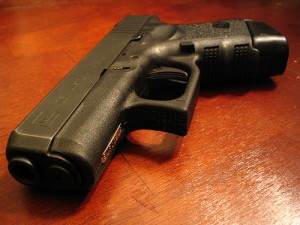Raheem Jackson’s Death and Scary Walks Home
The tragic circumstances surrounding the April 7th shooting death of a popular H.D. Woodson High School student point to a challenge that many of D.C.’s kids face as they seek to have active, healthy lives.
Raheem Jackson, 16, was reportedly trying to buy a gun from someone who robbed and killed him instead. Washington Post columnist Courtland Milloy wrote that
… If true, he would not have been the first otherwise law-abiding youngster who felt the need to carry a firearm for protection.
A star basketball player at Woodson, he’d leave practice long after sundown and have anxious walks home in the dark. Many students have refused to participate in extracurricular school activities because it just isn’t safe to be out at night.
As noted by Homicide Watch D.C., Jackson had even written a poem about his scary walks home, which was published by his school newspaper The Insider:
Walking Benning Road at night is like
being scarred on your first fight.
It’s crazy. You are paranoid, cautions on every
turn. You hear a voice, turn around.
No one speaking a word.
walking through the dark street
you run away with a long distance scream.
You’re running from dark faces you’ve seen,
all the nightmares you have ever dreamed.
It’s just you facing reality as you get to your house
still in a daze, trying to figure out
what it’s like to
walk down Benning Road.
Jackson’s heartbreaking poem speaks volumes to the fear of violence many kids face head on so that they can participate in extracurricular activities. Fear of having the same unfortunate fate of Jackson also impedes people from being physically active. A recent study by Kaiser Permanente and the Prevention Institute found fear of violence stops people from taking advantage of recreational facilities and opportunities even if they are in their neighborhoods. The study found that “people who are afraid of violence walk and bike infrequently, avoid using neighborhood parks, and restrict their children’s outdoor play.” In other words, if you build it, they may not come if it feels too dangerous to walk there.
In D.C., the problem is even more pressing. Obesity rates are higher in Wards 6, 7 and 8 than elsewhere in the city. Ward 8, which has the highest homicide rate, also has the lowest physical activity rate. According to D.C.’s Overweight and Obesity Action Plan, 15 percent of all deaths in the District are a result of obesity. But in some parts of the District, the fear of getting shot while walking in your neighborhood can trump the more subtle reality of dying from an obesity-related illness.





